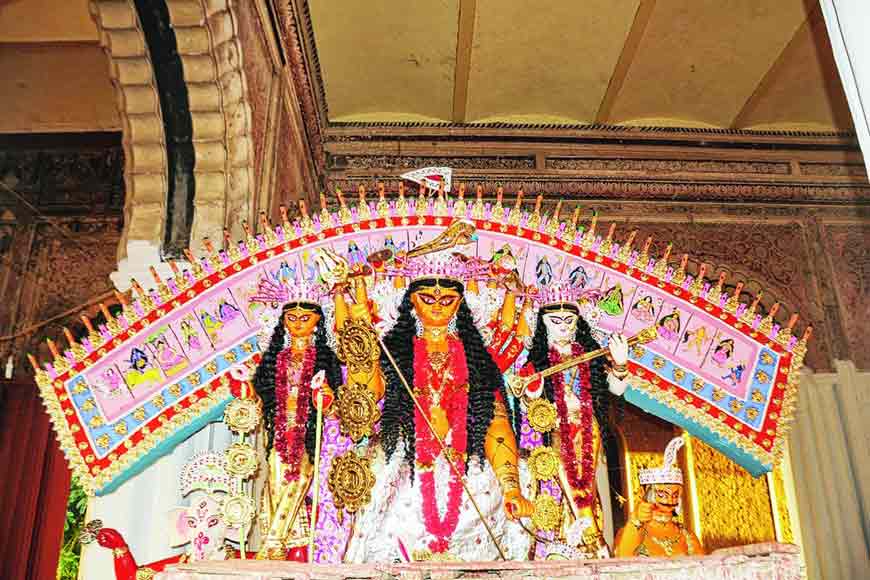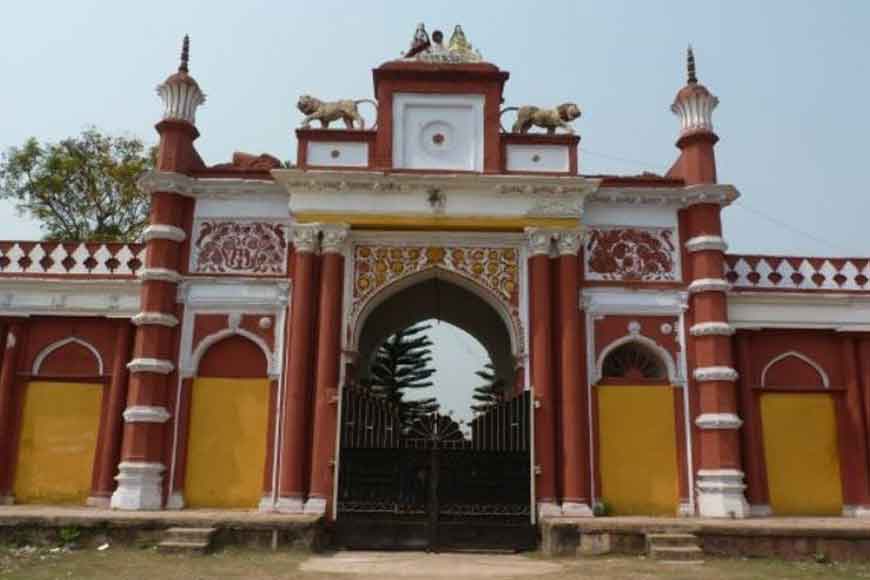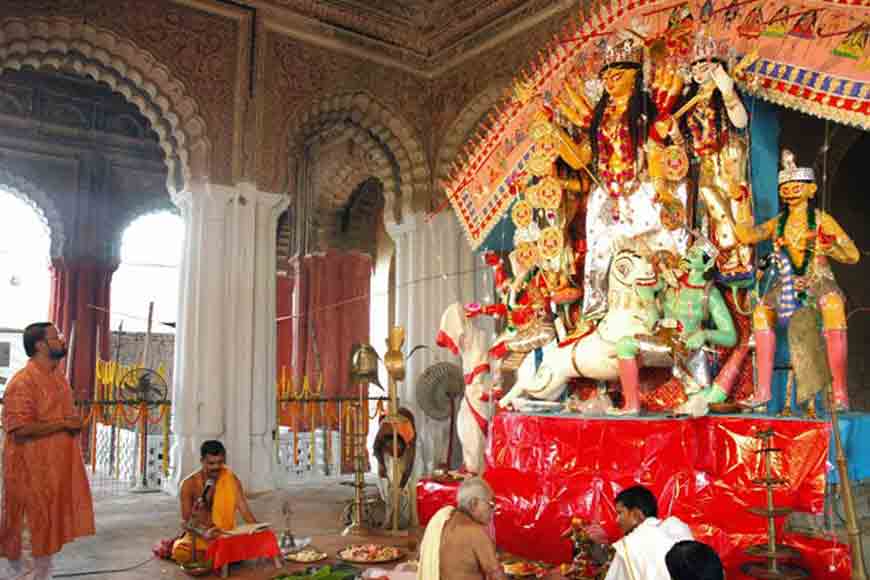The 'oh-so-unique' Raj Rajeshwari Durga Puja of Krishnanagar Rajbari – GetBengal story

Sarve Bhavatu Sukhinah
Sarve Santu Niramayaah
Sarvey Bhadrani Pashyantu
May all be happy, may all be free from illness, may all see what is auspicious --- that’s what Krishnanagar Rajbari prays for all during their Raj Rajeshwari Durga Puja. A glorious puja celebrated for the past 300 years, that started way back in 1683. The idol at the Rajbari is special and unlike most idols one gets to see in Kolkata, this one is dressed as a warrior with the lion resembling a horse. This puja was started by Maharaja Rudra Roy, the great grandfather of Krishna Chandra Roy, who first worshipped Devi Durga for peace and prosperity of the people of Nadia. The beautiful Durga Temple was erected in the central courtyard of the palace and the historical palace is surrounded by a dighi or water body. Reflection of the temple with its idol on this dighi is simply mind blowing.
Other than Durga Puja, the Rajbari also celebrates a number of other festivals like Jhulan Mela and Boro Dol. But their Durga Puja is well-known far and wide and every year not just the family from across the globe congregates at the Rajbari, but the whole of Nadia reaches the opulent puja grounds.

The ornaments of the idol in the Raj Rajeshwari style, is different from the conventional ‘Daker Saaj,’ that is common in most Bonedi Bariri pujos of Kolkata. Rather this particular Saaj is known as ‘Bedeni Dak.’ There was a time when the Sandhipujo (the pujo between Ashtami and Navami) was held with a lot of fanfare and blowing the cannons of the Rajbari so that the sound reached far and wide. These days cannons are no more a part of the Sandhipujo ritual, which is performed with offering 108 lotus flowers and 108 lit lamps. Earlier, goat sacrifice was done in Durgapujo. Now, of course, only sugarcane and rice are sacrificed.
The Raj Rajeswari look is said to be an incarnation of Goddess Lakshmi, the goddess of wealth and happiness. The warrior goddess is thought to save the world and the people of Nadia by fighting against all evils like poverty, hunger, cruelty, corruption, persecution, illiteracy, suppression, immorality, gender inequality, sorrow and pain to bring happiness among the people. The idol was specially made by Sadhan Pal who died in 1967 and after that the look of the idol has undergone minor changes. The two hands of the Goddess in front are shorter than the eight hands behind. The chalchitra has the Dashavatar depicted on it as is the Dashamahabidya. The Rani of the Rajbari starts the pujo with a special Homagni or lighting of the fire after the Mahalaya. This ritual fire keeps burning till Navami.
As part of the four-day festivity, the family celebrates a ritual called ‘Shatru Badh’ (killing the enemy) after the idol is immersed. Legend has it that this ritual was started by King Krishna Chandra (1710-1782), who prayed before Durga for power so that he could eradicate peoples' grievances and kill the evil force. During Shatru Badh, a member of the royal family, who symbolises the king, takes up a bow and arrow and shoots at a clay model of the enemy. The Sindur Khela is still a royal affair with around 10,000 women participating in the same.

Another ritual that worth mention is Jatramangal, when the king comes out to meet and interact with the people. Prasad is distributed among visitors on all four days of the Puja. The offerings are as royal as the Puja itself. The offerings start from Mahalaya and on Saptami seven different kinds of fried items are given, while on Ashtami it is eight in number along with pulao and chhanar dalna, sweets and kheer. On Navami, the prasad is aamish or non-vegetarian and includes nine fried items, three types of fish, rice and sweets. On Dashami a special bhog of boiled rice and Singhi fish is given along with fruits, curd and Khoi.










